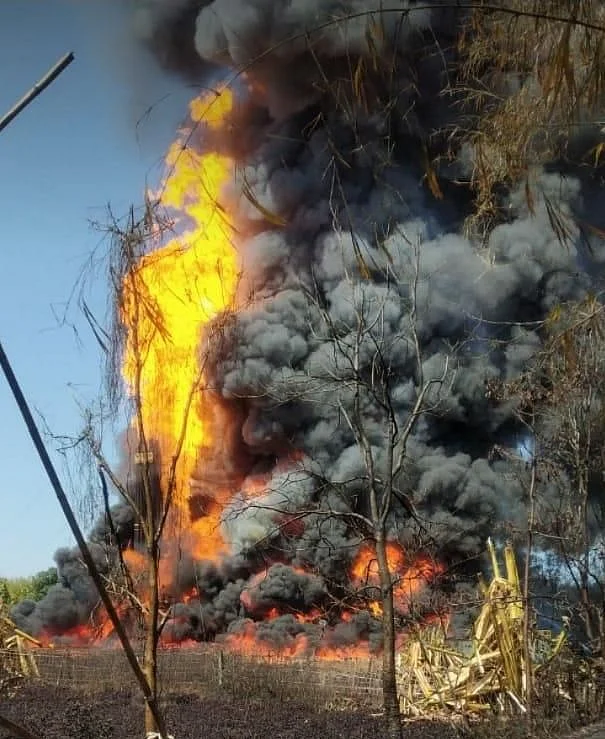Massive fire in Assam’s gas-leaking well, 3,500 in relief camps; CM Sonowal talks to Defence Minister
The oil well at Baghjan in Tinsukia, around 550 km east of Guwahati, has been leaking gas for the past 14 days, causing enormous damage to the region’s wildlife, wetlands and biodiversity

A massive blaze broke out at the natural gas producing well of Oil India Ltd (OIL) in Assam's Tinsukia district, around 550 km east of Guwahati, on Tuesday. The oil rig “DGR – Location 5” had originally blown out with a blast on May 27. Since then, oil vapour and gas have been escaping into the air at high pressure. An expert team from a Singapore-based emergency management firm has been trying to plug the leakage, officials said.
The oil well in Baghjan is close to the famous Dibru-Saikhowa National Park and Maguri-Motapung wetland. The oil spill and blaze has caused enormous damage to the region's wildlife, wetlands and biodiversity.
Officials in Tinsukia said that the huge fire, which began on Tuesday afternoon, may spread to adjoining areas. Assam Chief Minister Sarbananda Sonowal, on Tuesday, spoke to Defence Minister Rajnath Singh to seek help from the Indian Air Force to douse the blaze.

The National Disaster Response Force (NDRF), which has been deployed in the area after the gas leakage started on May 27, reinforced their strength to control the fire while top officials of Assam are also reviewing the situation.
As many as 700 families, comprising 3,500 people, have earlier been shifted to three relief camps after the leakage began. “About 50 houses have been burnt down. People are running with whatever they could carry. The situation is tense. The destruction of Baghjan and Maguri Motapong wetlands could not be averted. The fire will certainly destroy whatever was left after 12 days of contamination from the blowout,” said Rituraj Phukan, an environment activist. He underscored it was unnerving that even though it has been more than 150 years since oil was first discovered at Digboi in Assam, India still did not have the expertise to control such blowouts.
The consequences of the continued leakage of natural gas are palpable even 15 km away. Ornithologists and birders have been documenting the oil spill. It was birder Binanda Hatiboruah’s pictures of a dead gangetic dolphin that helped draw attention to the issues occurring due to the oil spill. Many fish, wild animals and birds have died.
Farm land with standing crops, as well as ponds and wetlands in the adjoining villages have also been badly affected and the threat is growing with every passing day. Many small tea growers in the area have also claimed layers of gas condensates in their tea gardens. The oil has been settling down on trees, farmlands and wetlands, turning everything barren and killing animals even before the second blast and the fire took place.
The state-owned OIL has also announced financial aid of Rs 30,000 to each of the affected families. An OIL press release said that after the preliminary discussion and de-briefing session, the experts from Singapore's 'Alert Disaster Control', led by Michael Ernest Allcorn, along with the OIL team, reached Baghjan well site on Monday afternoon.
Meanwhile, over 45 environmentalists, academics, wildlife experts, writers, social activists and journalists have expressed concern over the environmental consequences of the blowout near the Dibru-Saikhowa National Park, a biodiversity hotspot.
Follow us on: Facebook, Twitter, Google News, Instagram
Join our official telegram channel (@nationalherald) and stay updated with the latest headlines
Published: 09 Jun 2020, 5:34 PM
